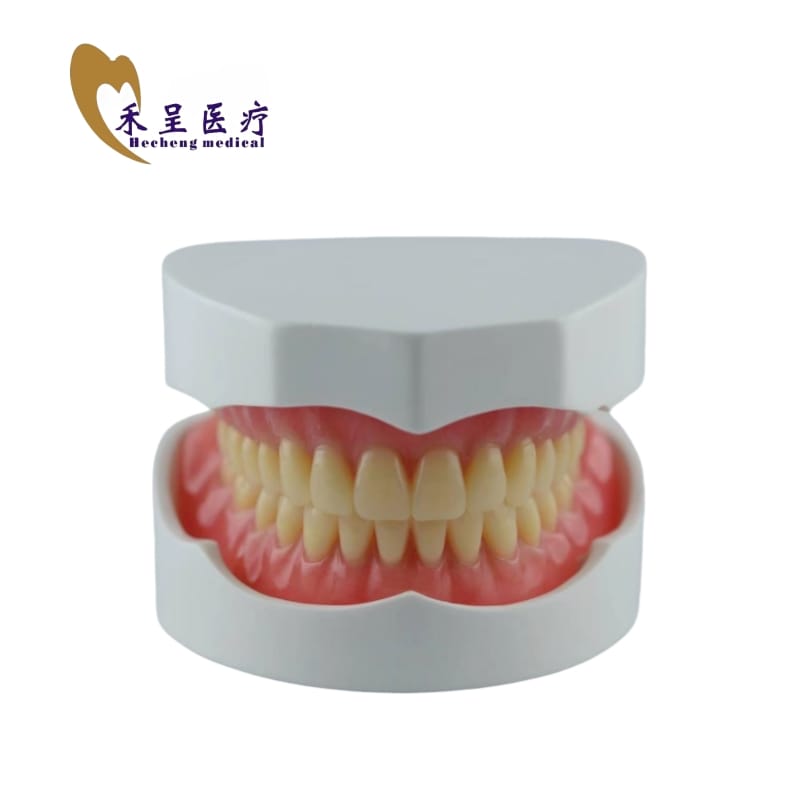Description
Veneer Tooth are highly regarded by both dental professionals and patients for their ability to correct minor imperfections and slight crowding, preserving more of the natural tooth structure than many other treatments. This makes them a preferred option over other restorative methods.
For dental laboratories, Hecheng Dental, which supplies products for dental labs, the focus on crafting high-quality veneers is crucial. Using advanced materials and precise fabrication techniques, Hecheng Dental ensures that each veneer meets the highest standards of aesthetics and function, making them a go-to choice for dental professionals aiming to deliver exceptional results to their patients.

1. Key Attributes of High-Quality Veneers:

Color Matching
The ability to match the color of veneers to the surrounding natural teeth is paramount. This involves:
- Advanced Color Technology. Utilizing state-of-the-art color matching technology to achieve a shade that complements the patient’s existing teeth.
- Layering Techniques. Skilled technicians apply multiple layers of porcelain, mimicking the natural gradient of tooth enamel which varies from the more translucent biting edge to the richer color near the gum line.
Shape and Contour
The shape of the veneers must mimic the natural contour of healthy, attractive teeth, which requires:
- Artistic Skill. Dental technicians need a keen eye for detail and artistic skill to craft shapes that not only look natural but also enhance the patient’s facial features.
- Customization. Each veneer is individually sculpted based on the patient’s dental impressions, ensuring that the end product complements the unique dental anatomy of the individual.
Size and Proportion
Then the size of the veneers must be in perfect proportion to the patient’s oral cavity, considering:
- Facial Symmetry. Veneers have good design to create a balanced and proportional smile that aligns with the patient’s facial features and symmetry.
- Functional Integration. Proper sizing ensures that veneers do not interfere with the patient’s natural bite and speech functions.
Alignment and Fit
Proper alignment of veneers is also critical for aesthetic and functional integration into the smile:
- Precision Fit. High-precision tools and digital imaging techniques ensure veneers fit snugly over the existing teeth, minimizing adjustments and potential discomfort.
- Seamless Integration. The alignment process includes adjusting the veneer to ensure it aligns perfectly with adjacent and opposing teeth, so providing a natural look and feel.
Relationship with Neighboring Teeth
Veneers must not only look good on their own but also in relation to the neighboring teeth:
- Interproximal Blending. Edges and contact points should blend smoothly with adjacent teeth, avoiding gaps that could collect food or promote decay.
- Occlusal Harmony. The occlusal (chewing) surfaces are designed to meet properly with opposing teeth, preventing issues with chewing and excessive wear.
2. Benefits of Veneer Tooth:

Aesthetic Transformation
Veneers have good design to mimic the appearance of natural teeth with remarkable accuracy. They can correct various cosmetic concerns including:
- Discoloration. Veneers can cover stains that teeth whitening cannot resolve, such as deep discoloration from medication or fluorosis.
- Chips and Cracks. Minor damage that affects the appearance of a smile can be seamlessly covered up, giving a more uniform look.
- Alignment and Spacing. For teeth that are slightly misaligned or unevenly spaced, veneers provide a quicker alternative to orthodontics in creating a perfectly aligned smile.
Minimal Discomfort
The process of applying veneers involves minimal preparation of the natural tooth, which means:
- Less Tooth Enamel Removal. Unlike crowns, veneers typically require a small amount of enamel removal, which helps in preserving the integrity of the tooth’s structure.
- Non-Invasive Procedure. The conservative nature of the procedure makes it less invasive, reducing discomfort during and after the procedure.
Customization
Veneers are also highly customizable, which allows for a tailored approach to each patient’s needs:
- Tailored Fit. Each veneer is individually crafted to match the shape and size of the specific teeth they will cover, ensuring a perfect fit.
- Color Matching. Veneers are color-matched to the surrounding teeth, providing a uniform appearance that looks natural and harmonious.
Durability and Functionality
- Strength and Protection. Veneers provide a durable layer that protects the underlying natural teeth from wear and tear, potentially preventing further damage.
- Longevity. With proper care, high-quality veneers can last for 10 to 15 years or even longer. This makes them a long-term investment in improving both the aesthetics and function of one’s teeth.
- Enhanced Resilience. Veneers are resistant to stains from coffee, tea, and smoking, which keeps teeth looking whiter and cleaner for longer.
Psychological and Social Benefits
Improved confidence and self-esteem are significant psychological benefits associated with getting veneers. So a flawless smile can have a positive impact on personal and professional interactions, enhancing social engagement and opportunities.
Maintenance
At last, maintaining veneers is straightforward and similar to caring for natural teeth:
- Routine Care: Daily brushing and flossing, along with regular dental check-ups, ensure the longevity of veneers.
- Avoiding Damaging Habits: Avoiding habits like biting nails or chewing on hard objects helps in preserving the integrity of veneers.





Reviews
There are no reviews yet.